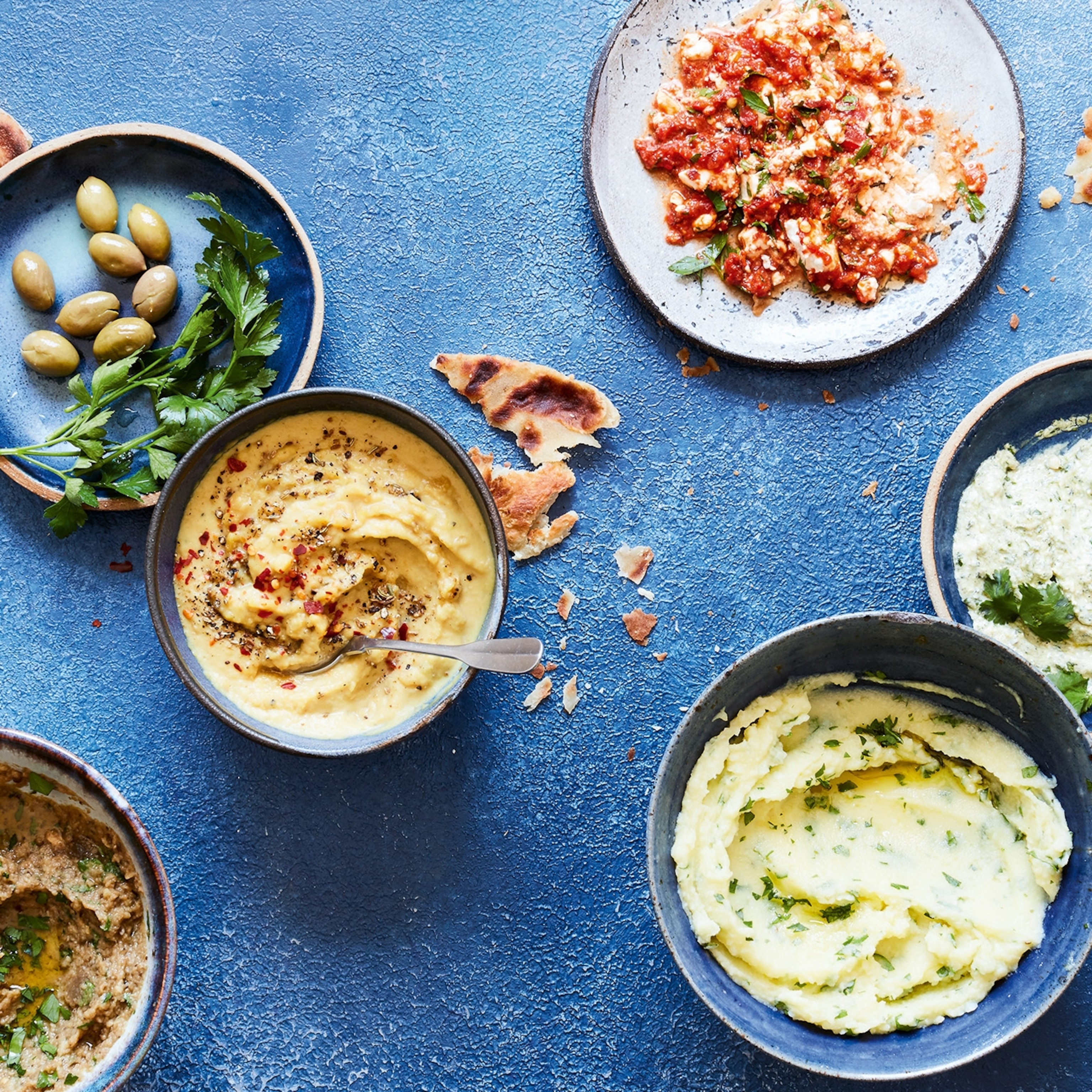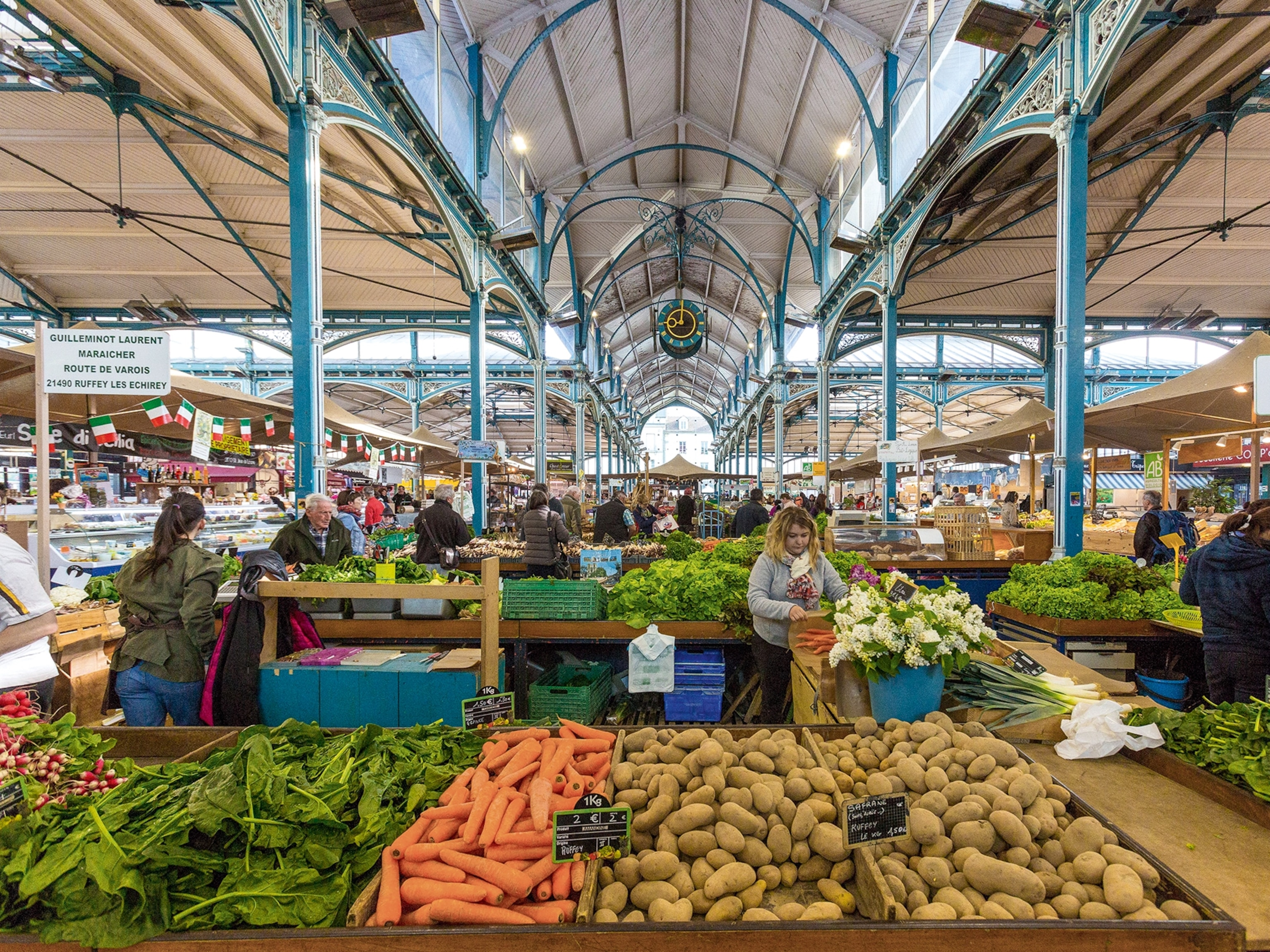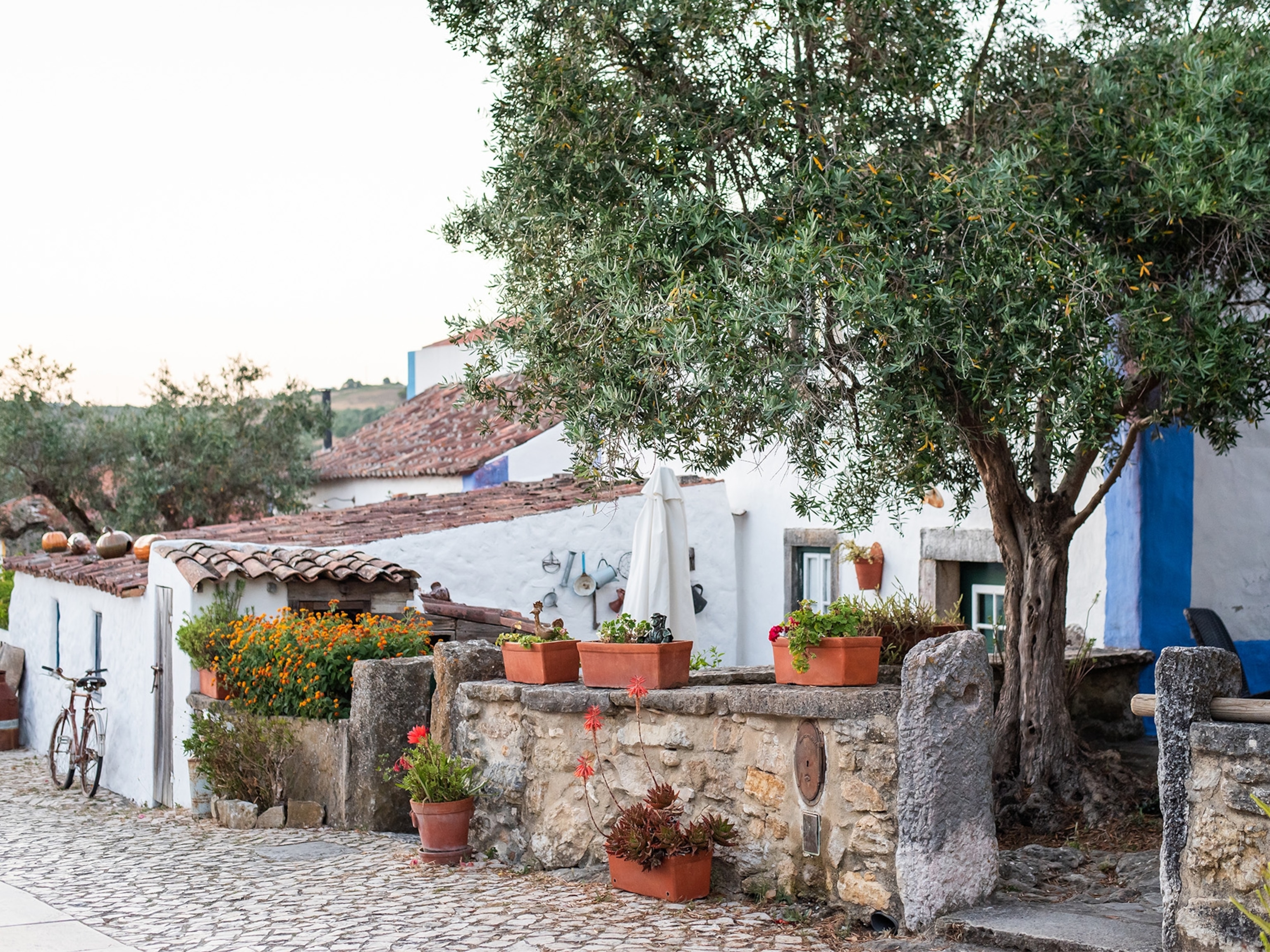
How to eat your way through Russia
Taste the place—from meat-filled dumplings to honey-soaked ‘chak-chak.’
Our taxi driver looks like he could kill us with two fingers.
He’s too tall to measure safely, has arms the size of small logs, and seems to wear his car like a metal jacket. We’re fresh off the plane, barreling toward St. Petersburg, the bright sunlight and jet lag undoing me. But I have to know: Who is he, really? Former Olympian? Down-on-his-luck assassin?
Out comes my best opener: “Uh, not even American sportsmen look quite as strong as you do.” He laughs. Turns out his name is Dima, and he’s former Spetsnaz—Russia’s elite special forces. I tell him I’m a writer visiting Russia with my 12-year-old son to introduce him to the “Russian table”—not just the bounty of flavors and dishes in this land of 11 time zones and over 160 ethnic groups, but also the conversation, laughter, and intimacy that can come with a shared meal here. Our Russian heritage is diminishing—I grew up with my immigrant grandparents and mother; my son is acquiring fragments of that influence—so we’re also here to see what this food means to us, or might come to mean.


Ice broken, Dima and I have a long chat about everything from politics (“First we had the tsars pushing the serfs around, then the Communists, then these baffling demokraty!”) to how we must, while in St. Petersburg, try his favorite version of seledka, or herring, with drizzled oil and onions.
The American diet may be heavily influenced by several cultures—think pasta, baguettes, and burritos—but Russian isn’t one of them. When asked what they know of Russian cuisine (or Russkaya kukhnya—the Russian kitchen), many people might respond “caviar,” or “cabbage,” or simply, “What cuisine?”
Yet when I first came to Russia in 1992, shortly after the fall of the Soviet Union, to meet long-lost family (and later to live as a reporter), I gained a new appreciation for Russian home cooking. There were homemade pickles; palm-size pies called pirozhki stuffed with meat or cabbage; and sculpted domes made up of tiny, precision-cut cubes of cucumbers, beets, and cheese, laid out like a Roman feast. And those were just the zakuski, or appetizers.
Returning to Russia now with Bennett, I’m hoping he might fall irrevocably in love with it too.


Gateway flavors in St. Petersburg
Sleet is whipping our faces, and the eggshell yellow and blue facades of St. Petersburg’s buildings are fading in the darkness as Bennett spots a basement restaurant called Katyusha. We descend into what looks like the living room of a Russian country home, or dacha.
Our waiter, Mikhail No. 1 (at least that’s what we learn the other waiters call him), recommends the beef Stroganoff—named after an aristocratic family from the tsarist era. He also suggests Siberian pelmeni for Bennett (“children love them”). He’s right. They are the gateway food for an addiction to Russian cooking—juicy, mild meat in soft dough, warmed in broth and seasoned with fresh dill. They never failed to please me as a child, even if the versions I ate were store-bought from the freezers of small Russian delis in Northern California.
The dish may have originally reached Siberia from China (they are akin to wontons) or perhaps during the Mongol invasion of the 13th century. Frozen, they could be stored all winter under the snow and, according to some recipes, are to be served with “lashings of sour cream.” One Russian politician—inspired by the French president’s push for UNESCO to safeguard the baguette as a cultural treasure—wants pelmeni and blini (crepes, often served with red caviar) to be accorded the same honor.

My son and I also have a thing we call the “adventure order”—the choice of something small and daunting, ordered almost on a dare. So when Mikhail No. 1 tells us of the koryushka (smelt)—“They have their charm, and they’re nashe”—we go for it.
“Nashe” is a word worth stopping for. It means “ours,” and if you hear it, it means someone is proudly telling you how intimately Russian something is. The smelts arrive fried and crispy, heads and tails and all, and they are charming. “The first smelt was terrible; the second was good,” says Bennett. “The third was really good.” Hooked.
Related: Here’s a quick guide to St. Petersburg.
Perhaps this isn’t the Russian table—we’re not dissidents talking politics in a cramped kitchen or generations discussing family matters at a sprawling dacha—but we do start to feel like personal guests of Mikhail No. 1. The flavors are like a taste bud atlas hinting at Russia’s ambitions and reach: smelt from the Gulf of Finland’s salty waters, pelmeni that could survive the snowdrifts of Siberia, a savory Stroganoff, its original recipe said to be shaped by the tsarist era’s obsession with all things French.
Back at the hotel, I watch the news, which covers President Vladimir Putin’s working day in breathless, minute detail, then a Russian documentary taking aim at America’s opioid crisis. Bennett tries watching a Russian cooking show but doesn’t understand the words—except when the chefs bemoan the “khaos!” in the kitchen, Gordon Ramsay–style.
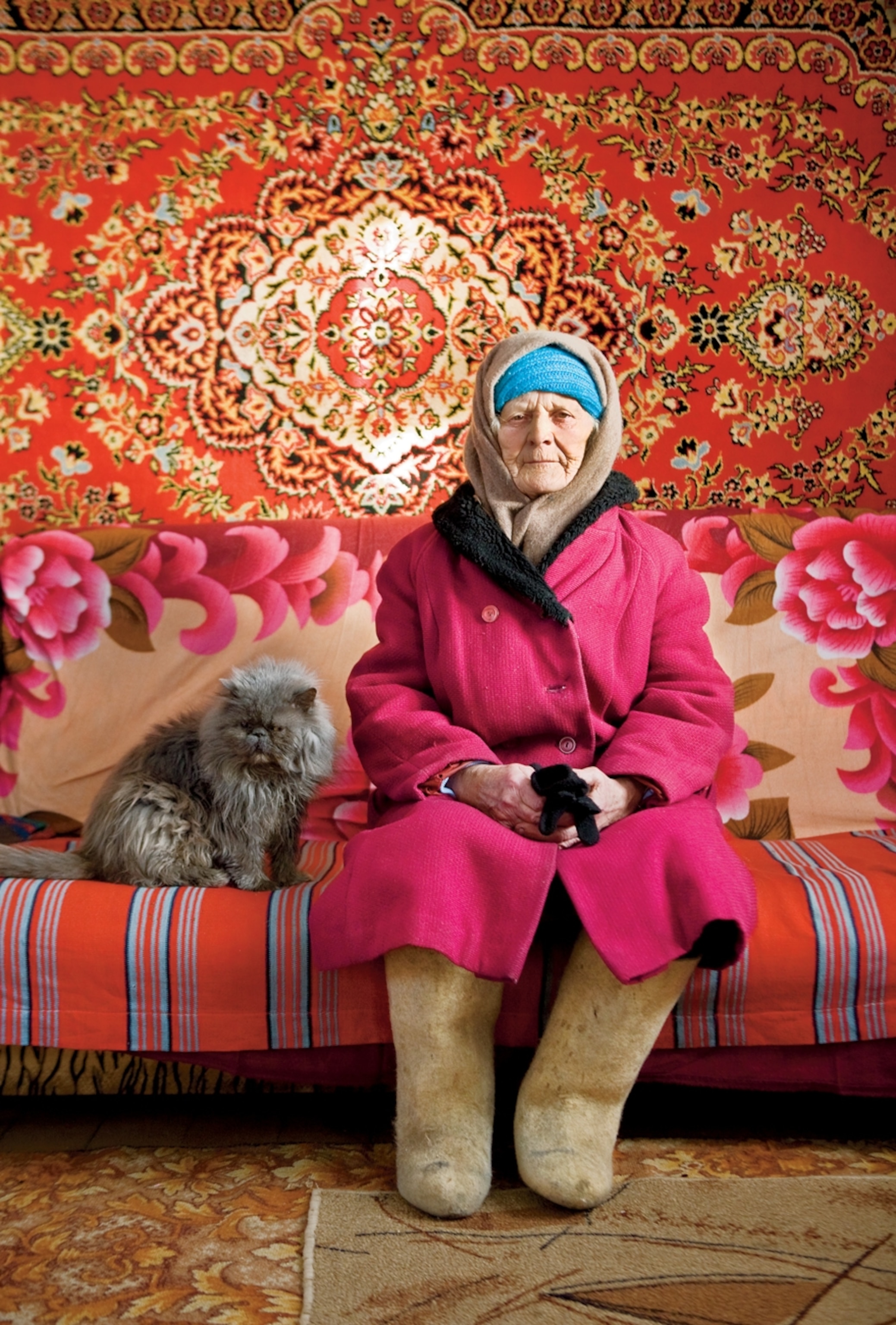
A taste of Russian history
The next morning we stop into Stolovaya #1, a retro Soviet cafeteria modeled after the government-run canteens that cropped up after the tsar and his kin had been violently dispatched in 1918, power had shifted to Moscow, and St. Petersburg had been renamed Leningrad.
We choose two bowls of beet-reddened borscht, and the cashier asks me in disbelief “bez khleba?”—no bread? Rookie move. In the excellent A Taste of Russia cookbook, author Darra Goldstein quotes a peasant saying: “a table with bread is an altar; without it, a plank.” Bread symbolizes so much in Russia—fertility, hospitality, well-being, survival. One Russian tradition is for guests to be greeted with bread and salt, or sometimes with an extravagantly decorated karavai loaf. Or there is the black bread called Borodinsky, which tastes of coriander and molasses and is unlike anything in the world when toasted and smeared with butter.
Exploring the city that day feels like we’re passing through more than a century of whiplash-inducing history, from the tsars to the Soviets to today. We see costumed dancers fixing their dresses in the cloakroom of the former tsarist Winter Palace (since transformed into the Hermitage Museum) and—in another hint of bread’s vital importance here—view a heartbreaking ration of rye bread in a museum about the Nazi blockade that killed over half a million starving Leningraders.
In the afternoon we head to a Soviet doughnut dive still in operation in an area of the city now home to Dior and Prada boutiques. At Pyshechnaya, which in classic Soviet-ese translates to Doughnut Place, we join dozens of Russians for milky, presweetened coffee and pyshki—hot rings of dough with powdered sugar.
Needing to build up our appetites, we follow a street flyer to an improbable “Best in Show” cat competition. Then we dip into a confectionery called Sever, or North, that since 1903 has served cakes hinting at a vast Slavic empire of flavors, such as the chocolate “Prague” and the creamy “Kiev.”
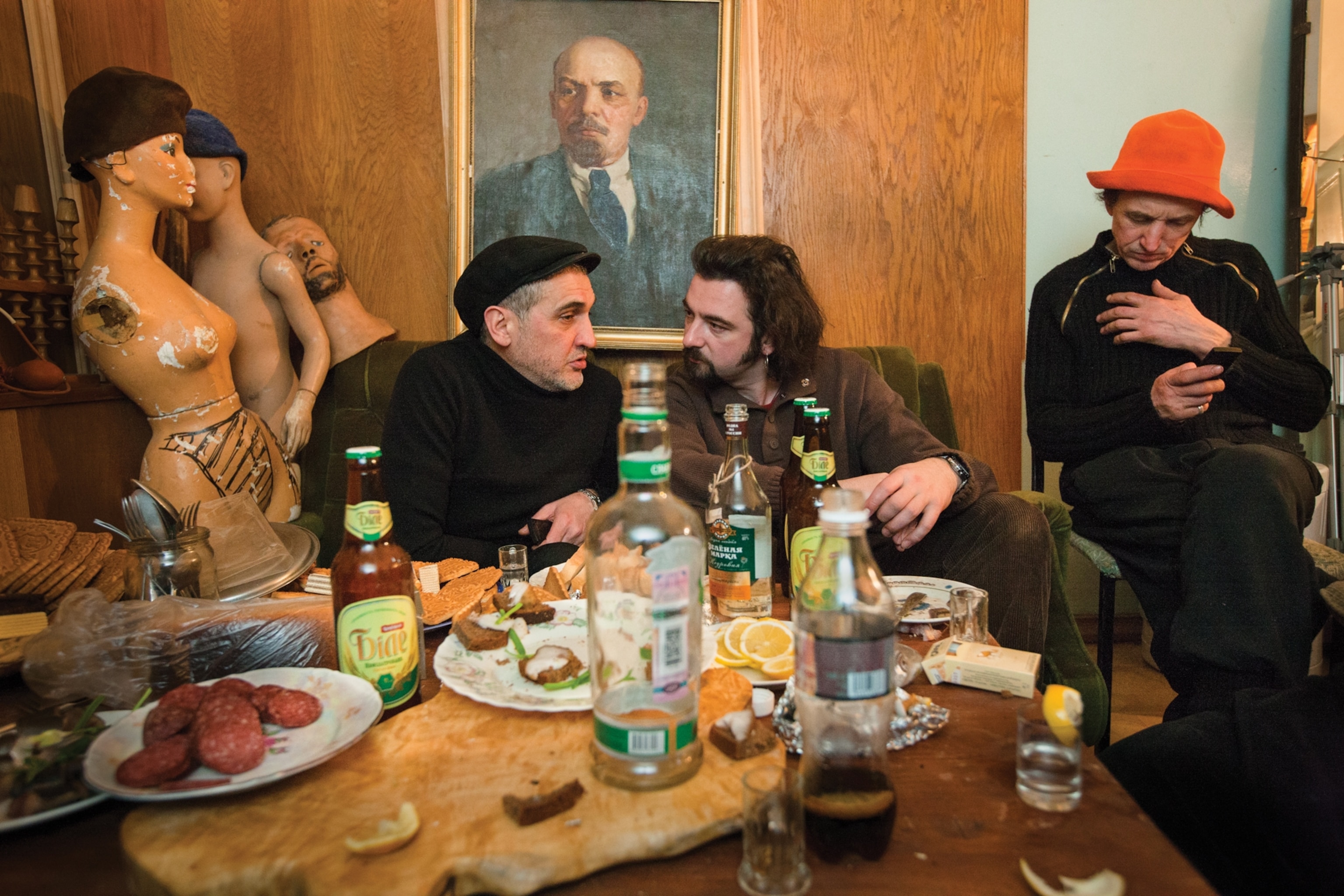

Later I teach Bennett to pour tea—a must after every meal—for others (i.e., me) first. And we fulfill our pickled-herring promise to Dima at the Idiot restaurant, named for the book by Dostoyevsky. A cold-weather people, Russians know how to pickle and brine their way through any winter, and while the oily, cured herring tastes too salty at first—and is one of the dishes that took me the longest to love when I first came to Russia—it soon seems to melt into the potatoes it’s served with.
We grab a chessboard and I order a shot of samogon, or Russian moonshine, said to hail from as early as the 1500s, when Russians wished to circumvent Ivan the Terrible’s state monopoly on wine. It’s been a form of liquid protest against state power ever since. The samogon arrives with a complimentary shot of house vodka I didn’t know was coming. I lose both chess games.

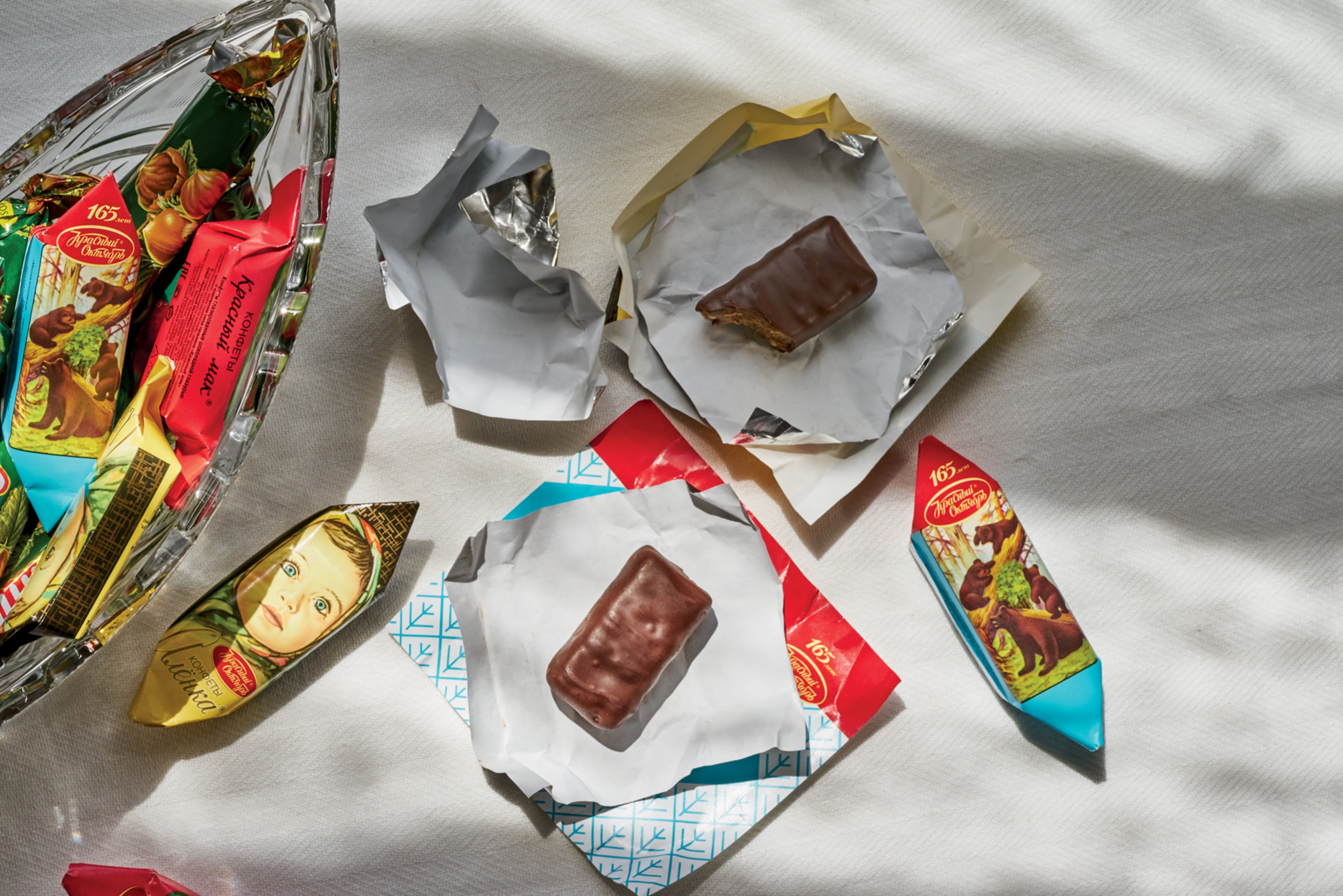
Family roots in Moscow
On the high-speed train to Moscow the next day, I think about my mother. Russian and born in Kyiv, Ukraine, she and my grandparents fled both the Nazis and the Soviets during what the Russians call the Great Patriotic War and we call World War II. My grandfather, Arkady, fought in the White Army against the “Reds.” Somewhere, my mother suspects at Ellis Island, her name changed from Elena to Helena. My first borschts were with her, and I worry I don’t have too many of hers left.
When we reach Moscow that evening, my friend Zhanna picks us up and, in classic Russian style, suggests we go out for Georgian food. Russians may have absorbed cuisine from the 14 other republics that made up the Soviet Union, but Georgian is a favorite. Zhanna teaches Bennett how to carefully cradle the large dumplings called khinkali so they don’t lose their broth. She insists I order Georgian wine (Joseph Stalin was known for loving the wines of his native country) even though she can’t drink. With zero-tolerance laws and a criminal justice system no one wants to mess with, smart drivers here don’t risk a drop.
The next day we feast on a medovik (honey cake) Zhanna has made from scratch, and we venture out through downtown Moscow for breakfast at a cheery little café near the Bolshoi Theatre. Later, while Bennett plays games in a retro Soviet arcade, I spend 50 rubles (81 cents) to buy a Soviet kopeck that will work in a gazirovka, the now antiquated machine for carbonated drinks that was still ubiquitous as late as the 1990s. We pass yet another Soviet-themed café. When I ask Bennett what he thinks of all the Soviet nostalgia, he jumps to its defense, comparing it to America’s obsession with retro dives: “We have diners in the U.S. How is it so different?” I explain one difference: the decades of political repression and fear, but Bennett seems to be developing a single-minded focus on Soviet comfort food and isn’t convinced. Later we devour ice-cream cones on a bench opposite a banner ad for Leaders, a perfume “Inspired by Vladimir Putin.”


Treats in Tatarstan
To get a taste of Russian cuisine outside the sway of Moscow and St. Petersburg, we hop on an overnight train to Kazan, Tatarstan, some 500 miles east of Moscow and populated by a mix of ethnic groups, mostly Tatar, who are predominantly Muslim. The capital’s name itself, Kazan, means “large cooking pot,” and I had read that local restaurateurs were fighting against the “burgerization” of their cuisine ahead of the hordes arriving for the World Cup in summer 2018.
We visit the rebuilt Kul Sharif mosque and a market where a Tatar woman cuts for us slabs of drying honey, one of them a rich brown ambrosia from bees that feed on flowering buckwheat. It tastes like the bowls of nutty buckwheat kasha, or porridge, that I discovered and loved in the ’90s but that my Russian boyfriend Gennady said reminded him of Red Army gruel.
We feast on kystyby (fried dough around potatoes) and the local delicacy: chak-chak, a honey-soaked dessert that an American friend once described as a “Russian Rice Krispies treat.” At the city’s tiny Chak-Chak Museum, a woman in Tatar costume teaches us the intricacies of Tatar cooking and culture. Be warned: If you’re planning on serving chak-chak at your wedding, don’t let it crumble—it’s a bad omen for the marriage.

Finding ‘the Russian table’
Back in Moscow on our last day in Russia, we settle in with my relatives, cousins of my mother, in the apartment I once called home for over a year. We follow typical Russian customs as we arrive. No hugging or greeting directly under the doorway. And we don’t show up empty-handed but with a cake. We eat our appetizers of oiled fish and rye bread—followed by an entrée of find-it-anywhere-in-the-world chicken and rice.
Related: Here’s how to explore Moscow if you have only 72 hours.
We try the “Bird’s Milk” cake I’ve brought from St. Petersburg, called so, says my cousin Galina, after the idea that “its taste is like something that doesn’t exist on Earth, like bird’s milk.” Her mother and I sip tea and look at photos from 1930s Ukraine of her and my mother, little girls playing.
It’s also my cousin Ira’s birthday, so Uncle Yuri pours Sovetskoye Shampanskoye into flutes, at the same kitchen table where I first arrived some 25 years ago. Ira’s husband, Vanya, eventually shows up. We talk about everything from low-carb diets to how U.S.-led sanctions against Russia are actually helping local farmers, thank you very much.
Of course this is “the Russian table.” In both food and spirit. But I think I also found it alone with Bennett: eating Dima’s pickled herring in St. Petersburg, giggling over chak-chak in Kazan, devouring Zhanna’s honey cake in Moscow.
I do think he’s falling in love with the Russian table, the same way my mother is still making sure I do—by providing a steady supply of small tastes that will be familiar enough to comfort me when she’s gone.
It’s getting late, but the mood at our table is still boisterous. I remember to ask about all the Soviet nostalgia that suddenly seems so hip to Russians—the Soviet-themed cafés, music, and movies that we encountered everywhere we traveled. “It’s like a myth,” says Galina. “People remember the good parts.” I can only hope that Bennett will too.
- National Geographic Expeditions
